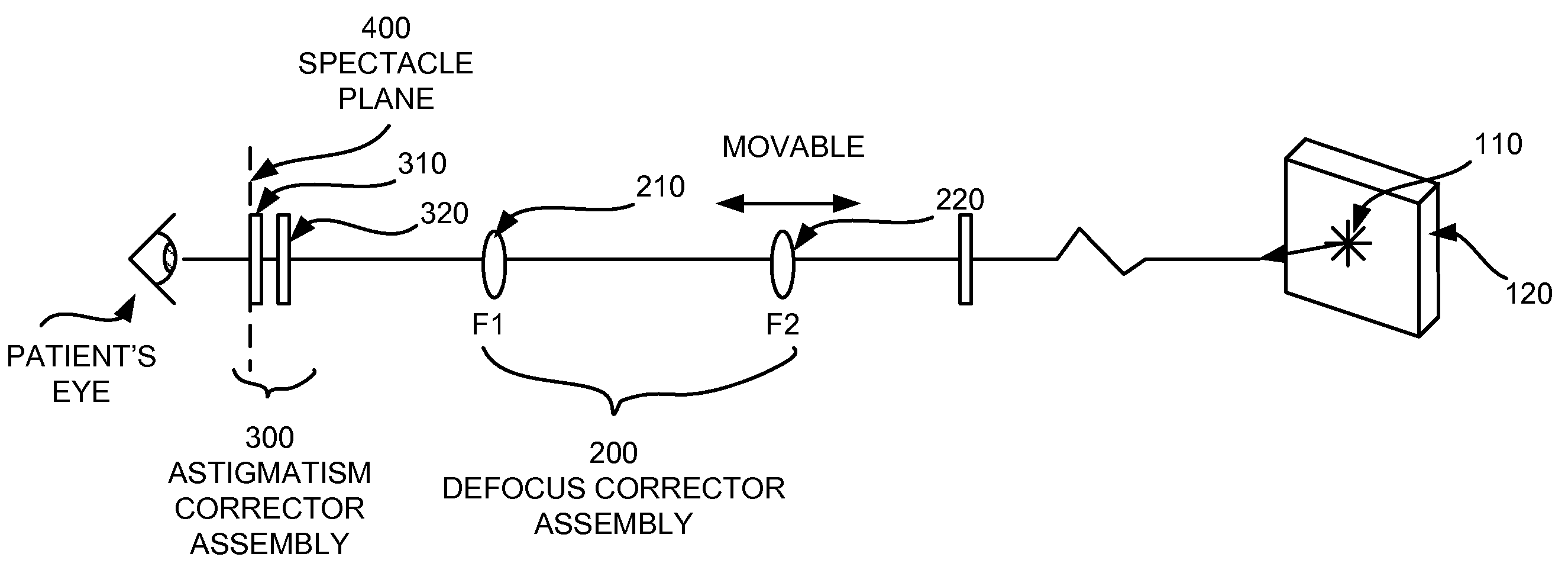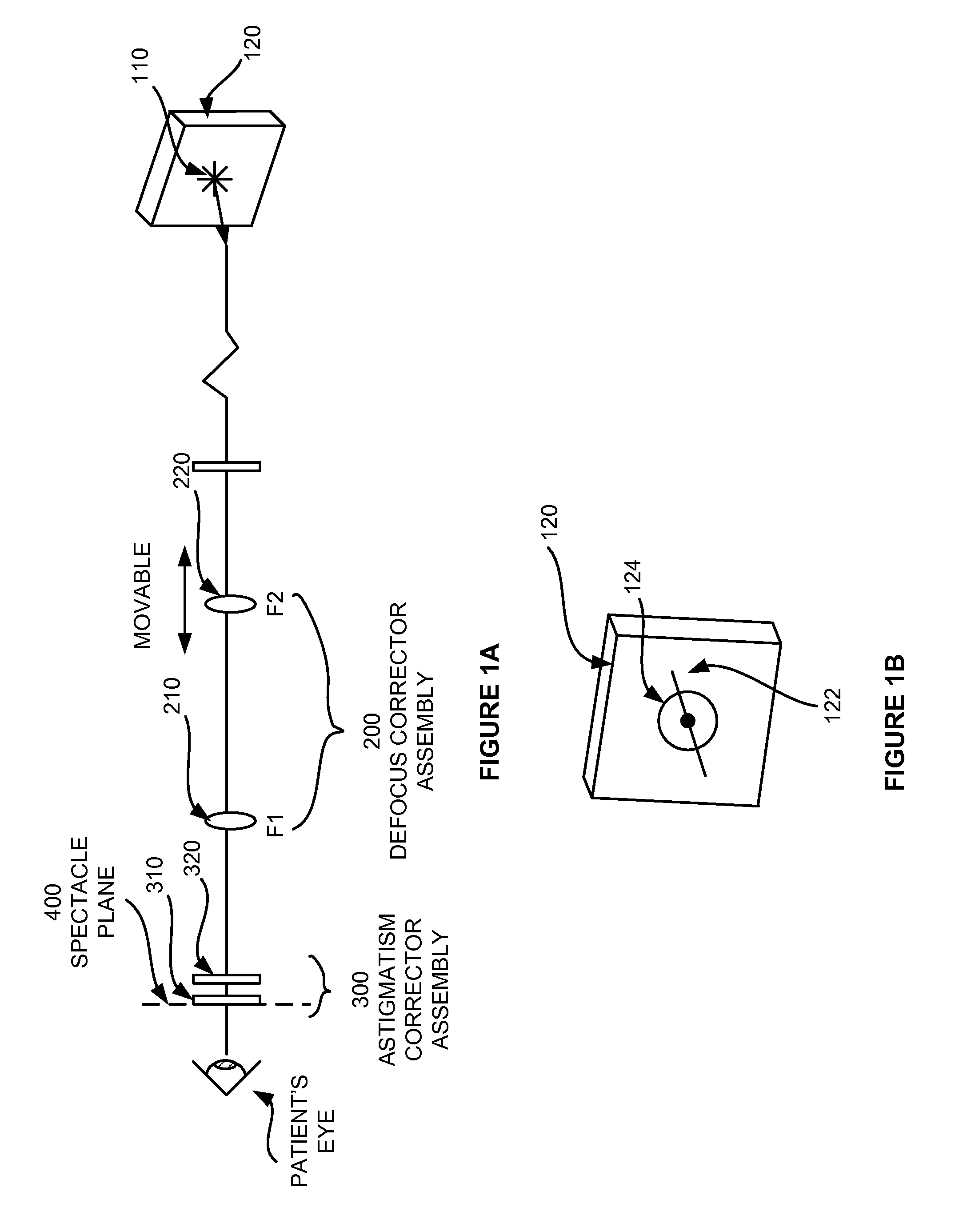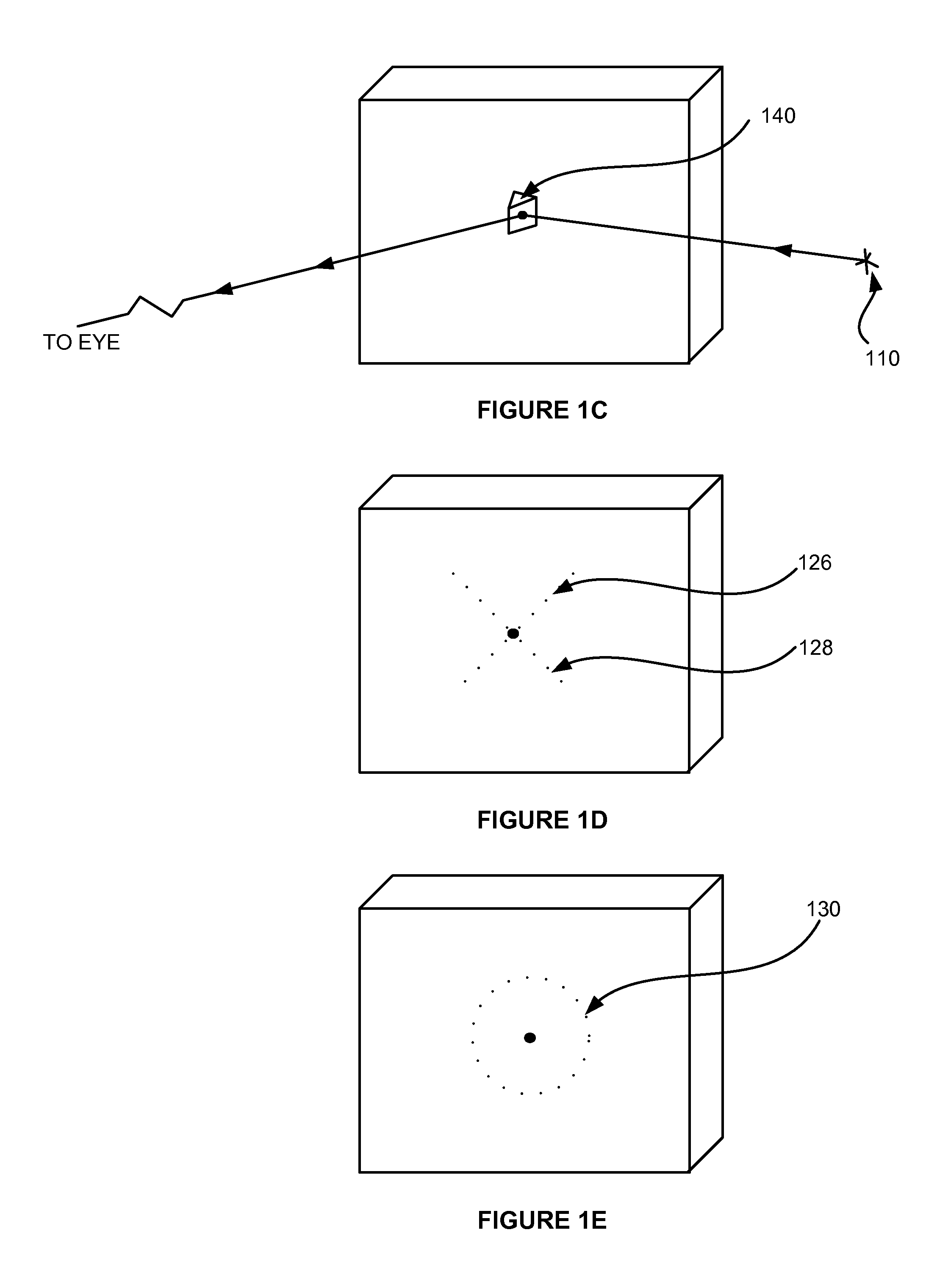Subjective refraction method and device for correcting low and higher order aberrations
a refraction method and aberration technology, applied in the field of subjective refraction methods and devices for correcting low and higher order aberrations, can solve the problems of affecting the difficulty of reducing the accuracy of the image, and the inferiority of the principle method of finding the best image, so as to reduce the long dimension of the linear image, minimize hoa, and eliminate the drawbacks of click-and-measure
- Summary
- Abstract
- Description
- Claims
- Application Information
AI Technical Summary
Benefits of technology
Problems solved by technology
Method used
Image
Examples
Embodiment Construction
[0073]A subjective refraction method and a WF refraction device are provided that use defocus and astigmatism terms to correct both the second order (it is also referred to as the low order) and high order aberrations (sometime referred to as higher order, namely, third order and higher terms as described by Zernike polynomials). The spectacle prescription from the present refraction method is free from induced blur due to glazing at various angles.
[0074]The present refraction method provides a clear end point for the defocus. It also provides the axis angle of the astigmatism defects, and the optimal cylindrical angle that corrects the astigmatism. Furthermore, the present method enables the correction of HOA using defocus, astigmatism and axis, without inducing increases of HOA at various glazing angles. Furthermore, the device is capable of determining the least minus power point, not causing an over correction. Furthermore, the refraction process takes less time than using phoro...
PUM
 Login to View More
Login to View More Abstract
Description
Claims
Application Information
 Login to View More
Login to View More - R&D
- Intellectual Property
- Life Sciences
- Materials
- Tech Scout
- Unparalleled Data Quality
- Higher Quality Content
- 60% Fewer Hallucinations
Browse by: Latest US Patents, China's latest patents, Technical Efficacy Thesaurus, Application Domain, Technology Topic, Popular Technical Reports.
© 2025 PatSnap. All rights reserved.Legal|Privacy policy|Modern Slavery Act Transparency Statement|Sitemap|About US| Contact US: help@patsnap.com



